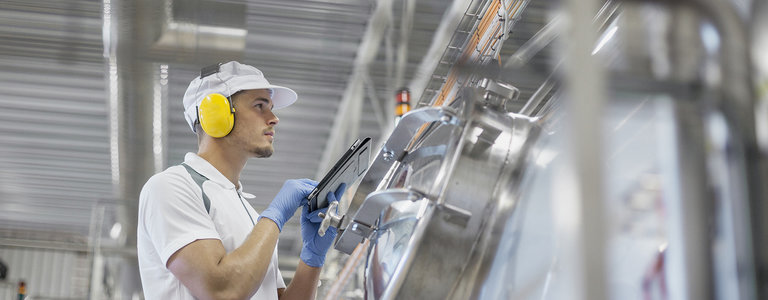
"The comprehensive view is key"
More and more operators of industrial plants are setting climate neutrality targets. When it comes to creating a roadmap for their activities, however, they often rely on third-party support. Jordi Koes and Melanie Noorlander from Bilfinger Tebodin explain what is important when developing and implementing a net zero roadmap – and where the stumbling blocks lie.
What are the key factors for developing a successful net zero roadmap?
JORDI KOES: First of all, it is important that the roadmap is broken down into clear process steps. There must be phases of analysis, idea collection and evaluation, development, planning and implementation. Because the path to climate neutrality involves a large number of measures and far-reaching changes, the roadmap needs to reduce the degree of complexity while still covering all the aspects that need to be considered.
What aspects, for example?
MELANIE NOORLANDER: They include stakeholder expectations, production and site specifics, current energy supply, the scope and nature of emissions and, of course, existing organizational structures. Regulatory requirements, market trends and many other external factors must also be taken into account. It is therefore necessary to analyze and evaluate these very carefully before embarking on development of the measures.
How long do the individual phases of a net zero roadmap take?
JORDI KOES: The duration depends heavily on the situation and the expectations of the company. As a general rule, however, we have found in our projects that the roadmap development phase – at Bilfinger we divide this into process analysis, base case analysis, environmental analysis, energy / CO2 saving potentials and risk as well as opportunities and costs - takes about four months.
One of the biggest advantages we have here at Bilfinger is the outstanding knowledge of a wide range of technologies and industries thanks to our broad positioning. "
What should the outcome of the roadmap development phase be?
MELANIE NOORLANDER: Once the roadmap has been developed, it should be clear how the defined climate neutrality target can be achieved. There are usually several alternatives. However, the core document is an overview of measures, prioritized by type, cost per ton of CO2 reduction and ease of implementation. This overview shows which measures have which impact, in which timeframe and what investment is required. The CAPEX amounts should be calculated as accurately as possible, of course.
How do you ensure that this calculation is as accurate as possible?
JORDI KOES: One of the biggest advantages we have here at Bilfinger is the outstanding knowledge of a wide range of technologies and industries thanks to our broad positioning. Since we provide comprehensive support to operators of industrial plants from planning through to construction and maintenance, we can take a comprehensive view. This helps enormously in assessing and calculating investments and their subsequent effects. And because we assist not only with development of the roadmap, but also with the engineering and implementation the measures, our investment calculations are accurate for each specific phase of the project.
What is the best way to proceed in the design and build phase? Which steps should be taken first, which later?
MELANIE NOORLANDER: We always recommend starting with the measures that can be implemented most quickly. This is because it is important for the progress of the project to achieve early successes. These are typically measures that reduce energy demand, for example by increasing energy efficiency. Subsequent measures focus on a gradual switch to renewable energy. The last category comprises measures that are usually associated with more far-reaching changes. These generally involve reorganizing production processes and changing fundamental structures and procedures.
Contact in case of questions:

Melanie Noorlander
Manager Engineering Process & Energy

Jordi Koes
Business Manager Industrial Sustainability

